Pancreatic Cancer Awareness All Year Long
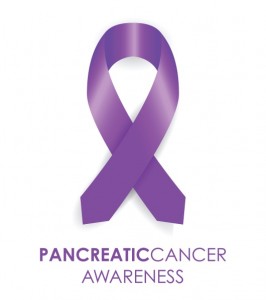 Pancreatic cancer is one of the most difficult types of cancer to treat, but ongoing medical advances are giving new hope to those diagnosed. The Pancreatic Cancer Action Network seeks to increase understanding and awareness of pancreatic cancer, support people managing this cancer, and raise funds for research into pancreatic cancer treatments. November was National Pancreatic Cancer Awareness Month, but it’s important to raise awareness all year long.
Pancreatic cancer is one of the most difficult types of cancer to treat, but ongoing medical advances are giving new hope to those diagnosed. The Pancreatic Cancer Action Network seeks to increase understanding and awareness of pancreatic cancer, support people managing this cancer, and raise funds for research into pancreatic cancer treatments. November was National Pancreatic Cancer Awareness Month, but it’s important to raise awareness all year long.
Awareness Is Half the Battle
Each year, more than 43,000 Americans are diagnosed with pancreatic cancer. Just as with other forms of cancer, early detection is vital to the successful treatment of pancreatic cancer. However, pancreatic cancer often doesn’t have any symptoms in its early stages. When symptoms do emerge, they can be so vague that patients and their doctors don’t realize that pancreatic cancer is a possibility.
Nov. 13, 2014 was the first annual World Pancreatic Cancer Day, sponsored by the Pancreatic Cancer Action Network to foster awareness of this often difficult-to-treat cancer. Awareness of early symptoms increases the chances of successful treatment for pancreatic cancer.
Know the Early Symptoms of Pancreatic Cancer
Do you know the early warning signs of pancreatic cancer? This type of cancer can cause a wide range of symptoms that can be hard to pinpoint. If you have two or more of the following symptoms, you could be experiencing the early stages of pancreatic cancer:
- Abdominal pain. Pain in the upper abdomen occurs when pancreatic tumors apply pressure to nerves.
- Yellowing of the skin and eyes accompanied by darkening of the urine occurs when pancreatic cancer impairs liver function.
- Weight loss. Many patients chalk weight loss up to stress, or even improvements in diet and exercise, but it’s often a result of pancreatic cancer. Weight loss may be accompanied by vomiting, nausea, or loss of appetite.
- Recent research from the Mayo clinic suggests that as many as 40 percent of pancreatic cancer patients are diagnosed with diabetes one to two years before being diagnosed with pancreatic cancer. Undetectable pancreatic tumors may be to blame for diabetes in these patients.
- Itchiness of the skin. Jaundice can cause the skin, soles of the feet, and palms to itch.
- Taste changes. Some research suggests that people in the early stages of pancreatic cancer may lose their taste for tobacco, coffee, or alcohol.
- Gall bladder enlargement. Just as pancreatic tumors can interfere with liver function, they can also cause bile to accumulate in the gall bladder, causing it to become enlarged.
- Change in stools. Pancreatic cancer can keep important digestive enzymes from reaching the intestine, causing a change in stools. Stools may become especially smelly, buoyant, or looser than usual. If cancer causes bleeding in the intestinal tract, stools may become dark in color and tarry in appearance.
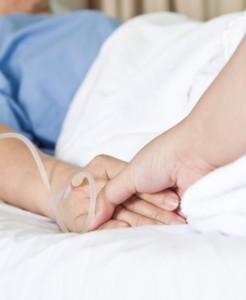 If you think you might be experiencing the early stages of pancreatic cancer, remember that treatment is possible. SBRT has been used successfully to target pancreatic tumors and kill them with radiation, even in patients who aren’t considered good candidates for surgery. SBRT is just as effective as surgery for eliminating cancerous tissue.
If you think you might be experiencing the early stages of pancreatic cancer, remember that treatment is possible. SBRT has been used successfully to target pancreatic tumors and kill them with radiation, even in patients who aren’t considered good candidates for surgery. SBRT is just as effective as surgery for eliminating cancerous tissue.
When it comes to fighting pancreatic cancer, knowing the early warning signs is key. Even though National Pancreatic Cancer Awareness Month is over, you can still participate by educating your family and friends on the early warning signs of pancreatic cancer, or hosting an awareness event in your town.
More
How Does SBRT Cyberknife Compare to Traditional Radiotherapy?
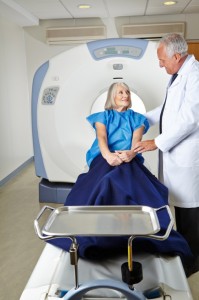 Cyberknife is a form of targeted radiation therapy known as SBRT. SBRT, or stereotactic body radiation therapy, was adapted from central nervous system stereotactic radiosurgery, a treatment technique that has been used to treat tumors of the brain and central nervous system for over 30 years. The only real difference is that SBRT is used to treat tumors throughout the rest of the body instead of specifically in the brain.
Cyberknife is a form of targeted radiation therapy known as SBRT. SBRT, or stereotactic body radiation therapy, was adapted from central nervous system stereotactic radiosurgery, a treatment technique that has been used to treat tumors of the brain and central nervous system for over 30 years. The only real difference is that SBRT is used to treat tumors throughout the rest of the body instead of specifically in the brain.
How does SBRT compare to traditional radiation therapy? SBRT delivers radiation directly to the cancerous tissue, sparing the healthy tissue around it. As a result, it can be administered in fewer sessions, with fewer side effects, and with higher success rates.
How Cyberknife Works
If your doctor has recommended Cyberknife to treat your cancer, you may be wondering, “What is Cyberknife?” After all, it’s only recently that Cyberknife and other SBRT treatments have become popular for the treatment of tumors outside of the brain. Cyberknife delivers a highly targeted dose of radiation that kills cancerous tissue as effectively as surgery. So if you’re not a candidate for surgery, you may be a candidate for Cyberknife SBRT.
SBRT Administers More Radiation Than Traditional Radiotherapy
Because it delivers radiation directly to the cancerous tumor while minimizing radiation exposure to healthy tissue, SBRT uses a much stronger dose of radiation than traditional radiotherapy. Traditional radiation therapy delivers two to seven beams of radiation, while SBRT delivers over 100 beams of radiation from a much higher number of angles. That means SBRT is much more powerful.
With conventional radiotherapy, it’s not possible to aim the radiation beams directly at the cancerous tissue — that’s why so much less radiation is used, to minimize the damage to healthy tissue. Because SBRT allows doctors to administer a much more potent dose of radiation, far fewer sessions are necessary. Traditional radiotherapy requires daily sessions for several weeks. SBRT requires only one to five sessions.
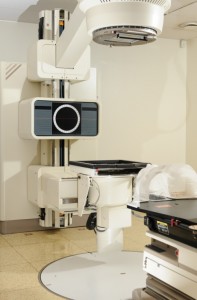 Cyberknife Is More Accurate Than Traditional Radiation Therapy
Cyberknife Is More Accurate Than Traditional Radiation Therapy
Because it’s able to target diseased tissue, Cyberknife SBRT is much more accurate than traditional radiation therapy. SBRT can deliver radiation to a margin of one to five millimeters surrounding a tumor. Conventional radiotherapy has a radiation delivery margin of 20 to 30 millimeters. This much wider margin means that conventional radiotherapy is more likely to cause healthy tissue damage and side effects like radiation pneumonia. With SBRT, the most common side effect is mild fatigue following treatment.
SBRT Is as Effective as Surgery
Not all tumors can be surgically removed. That’s why SBRT has long been used to treat tumors of the brain and central nervous system — these tumors are more difficult for surgeons to reach. Even when surgery is an option, it requires the removal of a margin of healthy tissue around the cancerous tissue. SBRT is just as effective as surgery for removing cancerous tissue from the body, but eliminates the need to remove healthy tissue.
When compared to conventional radiation therapy, SBRT is much more effective. Traditional radiotherapy is effective about 50 percent of the time. SBRT, on the other hand, is effective at controlling cancer more than 90 percent of the time.
If you’re not a good candidate for cancer surgery or simply want a less invasive treatment option, consider Cyberknife SBRT. With SBRT, doctors can administer potent, targeted radiation therapy that kills your cancer without harming the rest of your body. Find out what SBRT can do for you.
More
5 Ways to Fight Cancer Fatigue
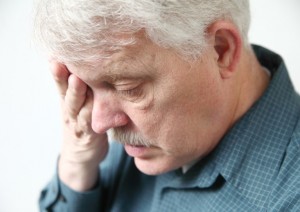 Fatigue is a common side effect of cancer and its treatment. Cancer-related fatigue can be disabling, and can interfere with your daily life and with your ability to stick with radiation therapy or other cancer treatment. But you don’t have to let cancer fatigue put you out of commission.
Fatigue is a common side effect of cancer and its treatment. Cancer-related fatigue can be disabling, and can interfere with your daily life and with your ability to stick with radiation therapy or other cancer treatment. But you don’t have to let cancer fatigue put you out of commission.
If your cancer fatigue is interfering with your ability to work, exercise, eat, spend time with loved ones, or otherwise live your daily life, talk to your doctor. Your doctor may be able to treat causes of cancer fatigue like pain, sleeplessness, or hormonal changes. You also may be able to take medications to treat fatigue related to cancer treatment. You can try to keep your energy levels up by getting plenty of sleep, managing your activity levels, exercising, accepting help from others, and eating a healthy diet.
1. Get Plenty of Sleep
You may expect a lot of things from radiation therapy, but many people are surprised to find that they need a little more sleep during radiation therapy than they did before. Try to get at least eight hours of sleep a night, but don’t expect that to necessarily be enough to feel well-rested. Light activity during the day can help you sleep better at night, as well as help you maintain your energy levels throughout the day. Try to go for a walk, do some yoga, or perform other light physical exercise each day. Do something relaxing before bed, like listening to music, meditating, taking a hot bath, or reading a book.
2. Keep Your Activity Levels Reasonable
Cancer fatigue may mean that you’re no longer capable of doing as much as you did before the treatment. Now is the time to think about your priorities — what activities are most important to you? You may find that spending more time with your children or enjoying your favorite hobbies is more important than working a full schedule or doing some housework.
3. Exercise
If you were already active prior to your cancer diagnosis, you can fight fatigue by trying to stay as active as possible. If you weren’t very active, you can still start a new exercise routine, simply by adding some light exercise to your daily routine. Even 15 to 30 minutes of stretching or walking can boost your energy. Talk to your doctor about how to safely add exercise to your daily routine.
 4. Don’t Be Too Proud to Ask for Help
4. Don’t Be Too Proud to Ask for Help
Whether you’re able to accept help from a professional home health aide or you’ll be asking for help from friends and family, assistance can be invaluable when you’re struggling with cancer fatigue. Delegating tasks like cooking, cleaning, running errands, and driving can help you conserve energy levels for those things that are most important to you without sacrificing your quality of life.
5. Eat a Healthy Diet
It can be hard to maintain a healthy diet when shopping and cooking makes you tired. Nutritious, tasty recipes don’t have to be complicated or time-consuming to prepare. Make eating well a priority. A diet rich in fruits, vegetables, nuts, lean meat, low-fat dairy, and whole grains can be easy to enjoy.
It’s normal to feel fatigue during cancer treatment. Talk to your doctor about ways to treat your fatigue, and take steps to keep your energy and strength up. Once your cancer treatment is finished, you’ll soon find your former energy levels returning.
More
Can Positive Thinking Really Help You Beat Cancer?
 A cancer diagnosis can bring about a lot of difficult feelings. Once the initial shock wears off, anger, fear, sadness, anxiety, and even depression can set in. It’s easy to start feeling guilty — like many people who’ve been diagnosed with cancer, you might wonder if you’ve somehow brought the cancer on yourself through your lifestyle or actions. You might also wonder if you can help yourself recover from cancer by maintaining a positive attitude or joining a support group.
A cancer diagnosis can bring about a lot of difficult feelings. Once the initial shock wears off, anger, fear, sadness, anxiety, and even depression can set in. It’s easy to start feeling guilty — like many people who’ve been diagnosed with cancer, you might wonder if you’ve somehow brought the cancer on yourself through your lifestyle or actions. You might also wonder if you can help yourself recover from cancer by maintaining a positive attitude or joining a support group.
While some studies have seemed to show a link between an increased chance of cancer survival and certain personality traits, a positive attitude, or participation in a support group, most research does not. Even when a particular study seems to show that maintaining a positive attitude can help with cancer treatment, researchers can’t duplicate those results. So, while joining a support group or trying to stay positive can certainly make it easier to cope with cancer treatment, it’s not going to influence the success of your treatment in any meaningful way.
Emotions and Personality Don’t Influence Cancer Treatment
According to the American Cancer Society, it was once believed personality type was a risk factor in developing cancer. It was thought that those with introverted or neurotic personalities were more prone to cancer. It was perhaps a natural extension of this belief to feel that a cancer patient’s core personality traits influenced how successful cancer treatment might be. A 2010 study that followed 60,000 people for 30 years put this theory to rest. The researchers found no link between core personality traits and cancer risk or survival rates.
Still, many people continue to believe that your attitude or emotional state during cancer treatment can influence your chances of survival. A 2007 study of over 1,000 people being treated for head and neck cancer found that patients’ emotional state during cancer treatment did not influence their chances of treatment success. No amount of positive thinking or visualization can help your body fight cancer more effectively. It makes sense — if you could think your way out of having cancer, no one would ever need chemotherapy.
 A Positive Attitude Can Improve Quality of Life
A Positive Attitude Can Improve Quality of Life
That doesn’t mean there’s no value in making an effort to stay positive during cancer treatment in Los Angeles. Don’t beat yourself up if you find yourself struggling with difficult feelings in the wake of a cancer diagnosis — it’s normal to experience emotional side effects, and blaming yourself for feeling bad will only make you feel worse. If you’re struggling with fear, anger, depression, guilt, or other difficult feelings during cancer diagnosis, you may want to seek counseling or look into attending a support group.
Counseling and support groups can help you cope with fatigue, tension, and anxiety during cancer treatment, and can reduce your risk of depression. People who seek help to cope with cancer consistently report better quality of life than those who do not. Other ways to cope include doing your best to maintain a healthy lifestyle, spending time with family and friends, accepting help, making time for what’s really most important to you, and taking life one day at a time.
Despite popular belief, positive thinking can’t help you beat cancer. But it can help you maintain a normal, happy lifestyle throughout cancer treatment. Don’t be afraid to ask for help in coping with the emotional effects of cancer and its treatment. You’re not alone.
More
Hope Is the Key to Successful Cancer Treatment
 No matter where you are in cancer treatment or what your prognosis, hope is an important part of your treatment success. That doesn’t necessarily mean that you hope for a cure — although many people, especially among those whose cancer was diagnosed at an early stage, hope for exactly that. People who have survived cancer hope that their cancer won’t return. And even those for whom a cure isn’t likely have hope, too — they hope to spend time with loved ones and friends, go on an anticipated vacation, attend a school reunion, maintain their quality of life, and keep cancer from progressing.
No matter where you are in cancer treatment or what your prognosis, hope is an important part of your treatment success. That doesn’t necessarily mean that you hope for a cure — although many people, especially among those whose cancer was diagnosed at an early stage, hope for exactly that. People who have survived cancer hope that their cancer won’t return. And even those for whom a cure isn’t likely have hope, too — they hope to spend time with loved ones and friends, go on an anticipated vacation, attend a school reunion, maintain their quality of life, and keep cancer from progressing.
Why Hope Is Important
Having hope in the face of cancer treatment can help you feel better about where you are in life, but that’s not the only reason it’s important. Feelings of hope — whether they’re for a cure or for other realistic goals — can help you to better come to terms with your cancer diagnosis and what it means for your future, but they can also boost your overall pain tolerance and improve your quality of life. Cancer patients who are hopeful are more psychologically resilient, and benefit from better self-esteem.
Cultivating Hope During Cancer Treatment
You might think of hope as something that just happens to you, but in fact, hope is something you can nurture through your actions. Cultivating hope in the midst of adversity requires four steps:
- Sizing up the situation
- Thinking about it
- Making new goals
- Putting the situation in a new context
Cultivating hope isn’t just something you do by yourself, however. The others in your life can bolster — or tear down — your feelings of hope. Friends, loved ones, and members of your treatment team can help you stay hopeful during treatment. Reach out to coworkers, family members, friends, fellow worshippers at church, and members of your treatment team for support, encouragement, and compassion. It could make a big difference.
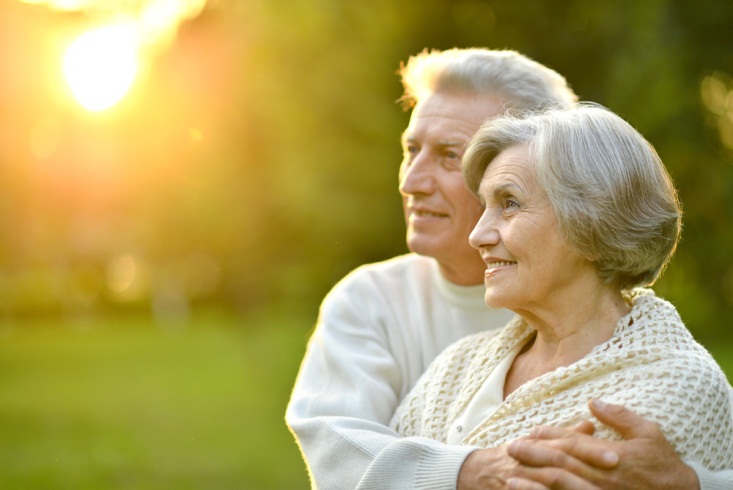 Your sense of control over your illness and your own sense of determination to meet your personal goals can also influence your ability to feel hope. But without hope, you’ll suffer from feelings of emotional and psychological distress and fear; hopelessness could even cause your health to suffer and impair your cancer treatment.
Your sense of control over your illness and your own sense of determination to meet your personal goals can also influence your ability to feel hope. But without hope, you’ll suffer from feelings of emotional and psychological distress and fear; hopelessness could even cause your health to suffer and impair your cancer treatment.
If your cancer was diagnosed at an early stage and you hope for a cure, then reading testimonials from cancer survivors can help you nurture your feelings of hope. Even if your prognosis is less encouraging, you can begin to find hope by adapting to your diagnosis. Cancer is not your whole life; keep the bigger picture in mind. Focus on what’s important to you – family, traveling, or hobbies, for example. Doing your best to maintain a normal routine can help.
Many cancer patients maintain their sense of hope by avoiding any negative thoughts or information that could discourage them. Taking steps to actively avoid statistics about your specific type of cancer, or your prognosis, isn’t denial as long as you accept the reality of your diagnosis. Instead, it can be an important part of maintaining your sense of optimism and mental health.
While it might seem difficult to cultivate hope in the face of a cancer diagnosis, doing so can improve your treatment outcomes and your quality of life. Don’t let your cancer diagnosis distract you from the things that matter.
More
 Pancreatic cancer is one of the most difficult types of cancer to treat, but ongoing medical advances are giving new hope to those diagnosed. The Pancreatic Cancer Action Network seeks to increase understanding and awareness of pancreatic cancer, support people managing this cancer, and raise funds for research into pancreatic cancer treatments. November was National Pancreatic Cancer Awareness Month, but it’s important to raise awareness all year long.
Pancreatic cancer is one of the most difficult types of cancer to treat, but ongoing medical advances are giving new hope to those diagnosed. The Pancreatic Cancer Action Network seeks to increase understanding and awareness of pancreatic cancer, support people managing this cancer, and raise funds for research into pancreatic cancer treatments. November was National Pancreatic Cancer Awareness Month, but it’s important to raise awareness all year long. If you think you might be experiencing the early stages of pancreatic cancer, remember that treatment is possible. SBRT has been used successfully to target pancreatic tumors and kill them with radiation, even in patients who aren’t considered good candidates for surgery. SBRT is just as effective as surgery for eliminating cancerous tissue.
If you think you might be experiencing the early stages of pancreatic cancer, remember that treatment is possible. SBRT has been used successfully to target pancreatic tumors and kill them with radiation, even in patients who aren’t considered good candidates for surgery. SBRT is just as effective as surgery for eliminating cancerous tissue.







